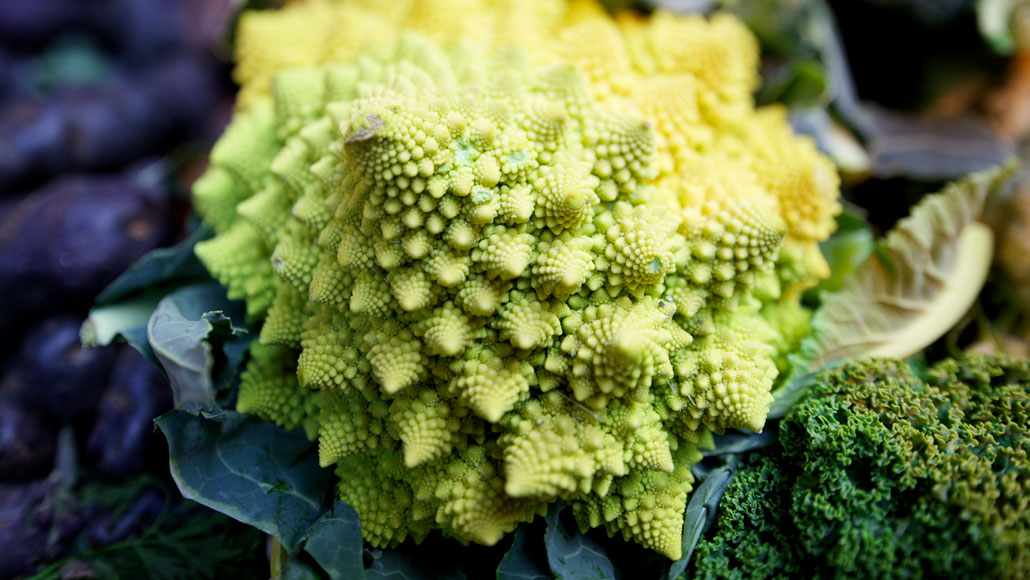How Romanesco cauliflower grows spiraling fractal cones
Tweaks in just three genes can mimic the pattern in a common lab plant

Romanesco cauliflower (shown) exhibits one of nature’s most stunning fractal displays.
Aurelien Guichard/Flickr (CC BY-SA 2.0)
By Nikk Ogasa
Spirals of swirling green cones are a striking feature of a head of Romanesco cauliflower. Those spirals also form a fractal pattern — a set of shapes that repeats itself on multiple scales. Researchers have now pinpointed the genes that underlie this stunning structure. Tweaks to the same genes caused a common lab plant to also exhibit the fractal pattern.
“Romanesco is one of the most conspicuous fractal shapes that you can find in nature,” says Christophe Godin. He is a computer scientist in France at École Normale Supérieure de Lyon. There, he works with the National Institute for Research in Digital Science and Technology. He uses computer models to study how plants grow certain shapes — like Romanesco’s cones. “The question is: Why is that so?” he asks. Many scientists have sought an answer.
Godin was part of a team that focused on a common lab plant called Arabidopsis thaliana. It’s a weedy plant in the same family as cabbage and mustard greens. And plant scientists use it so much that some think of it like the lab rat of the plant world. Godin’s group knew a variant of this plant could produce small cauliflower-like structures. That helped the researchers focus on genes known to guide flower and shoot growth.
The team designed a computer model to simulate complex patterns of gene activity. Then they watched how the model projected these changes would affect the plant’s shape. They also grew plants in the lab with specific gene changes.
These experiments linked the fractal growth patterns to three genes. Arabidopsis plants with changes in those three genes grew a Romanesco-like head. The researchers described their new fractal plants July 9 in Science.
Two of the tweaked genes limit flower growth but trigger runaway shoot growth. In place of a flower, the plant now grows a shoot. On that shoot, it grows another shoot, and so on, says co-author François Parcy. He is a plant biologist at the French National Centre for Scientific Research in Grenoble. “It’s a chain reaction.”
The researchers then altered one more gene. The third change increased the growing area at the end of each shoot. That provided space for spiraling conical fractals to form. “You don’t need to change the genetics much to get this form to appear,” says Parcy. The team’s next step, he says, “will be to manipulate these genes in cauliflower.”

Educators and Parents, Sign Up for The Cheat Sheet
Weekly updates to help you use Science News Explores in the learning environment
Thank you for signing up!
There was a problem signing you up.







